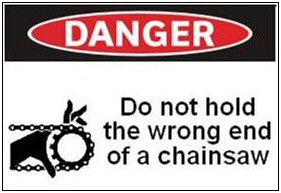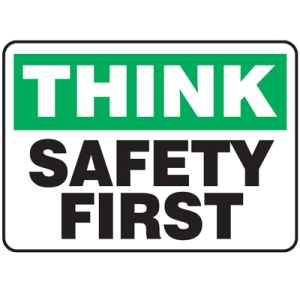This isn’t the usual leadership post. Safety is important and leadership is just as important in safety programs as it is in sales.
Workplace safety is an expensive proposition. Meeting the standards imposed by local, state, and federal government is a monumental task; the costs to keep workers safe can seem like enough to fuel the economy of a small country. As a result, safety is often deemed an unnecessary expense, especially when the budget gets tight. Leaders and managers at all levels must ensure an effective safety program because caring for our employees is the best benefit we can provide. If that doesn’t move you to action, one thing that will is the actual cost of a workplace injury or fatality to your business.
According to the Occupational Safety and Health Administration (OSHA), direct workers compensation costs are close to $1 billion per week. That’s ONE BILLION DOLLARS PER WEEK! Think of the impact if that $1 billion were available to the economy? Did you catch that? $1 billion! With over 6,000 workplace fatalities and over 6 million non-fatal injuries and illnesses the total cost to businesses comes to over $128 billion annually. That’s an enormous sum of money lost to businesses, shareholders, and employees. We know that the health and safety of our employees is worth far more than that.
Workers have a right to a safe workplace and employers have an obligation to provide workplaces that are free of recognized hazards that are causing, or have been known to cause, injury or death. OSHA requires employers to:
• Provide working conditions that are free of known dangers
• Keep work area floors clean and as dry as possible
• Provide required fall protection equipment at no cost to workers
• Train workers on job hazards in a language they can understand
OSHA violations can range anywhere from just a warning to $70,000 per incident with recent legislation being proposed that would raise fines even higher. Workers’ compensation rates can take a huge chunk out of your profits, too. These rates reflect average claim cost for every $100 in payroll. The average worker’s compensation rate for construction is 7 to 8 percent of your payroll, but can be lower for executives, around 2 percent, or 25 percent for more high risk activities. If you are a leader or manager one thing you are tasked with is responsibility for the bottom line. You’re always looking for cost controls; it only makes sense to keep these controllable costs from getting out of control.
Safety is expensive but we know that the alternative is a lot more so. Lost time, lost productivity, higher insurance and worker’s compensation costs, lower employee morale and higher turnover all make the cost of doing business higher it has to be. But it doesn’t have to be this way if company leadership will set the standards for employees to follow and leaders and managers will enforce them.
Be Safe out there!
Stephen is a Senior Training Specialist with Shermco Industries, Inc. in Irving, TX. He specializes in electrical skills and safety training for utility, industrial, and commercial clients. He can be reached at shester@shermco.com. These are his opinions alone.


Recent Comments